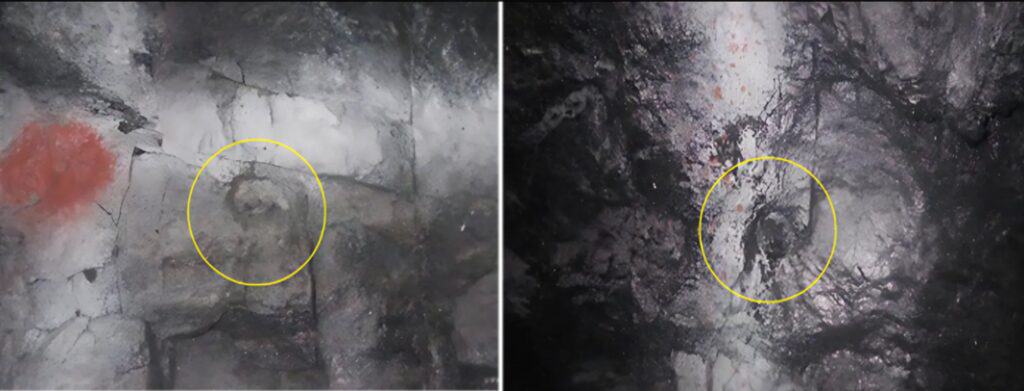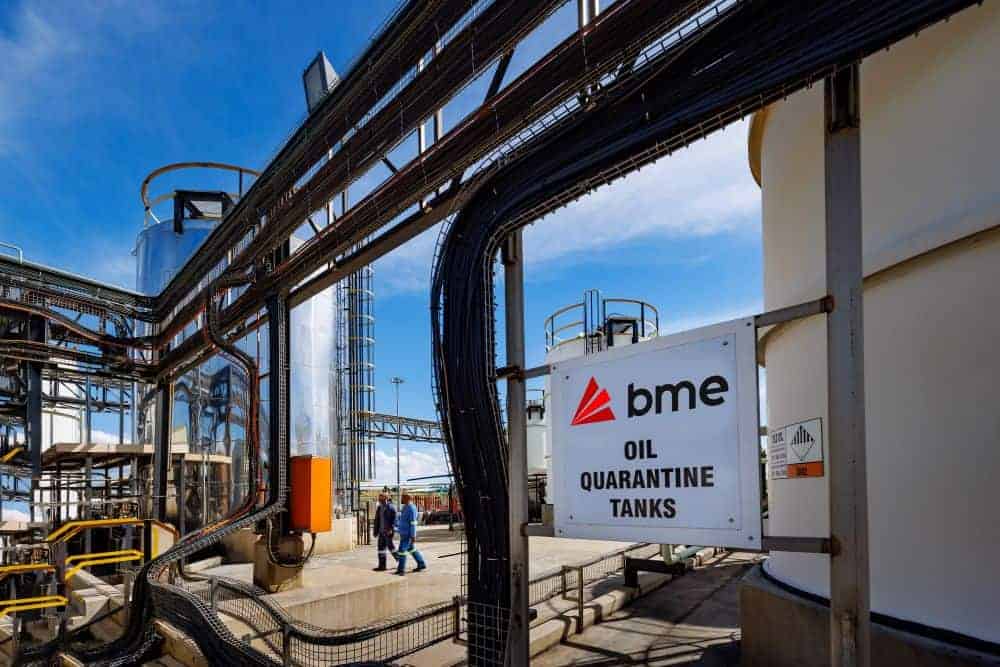The close correlation between fragmentation size and mining costs has often been overlooked by mines, said Derick Menezes, Regional Manager: Underground Operations at BME, in a recent webinar.
“Both extra fine and excessive forced rock fragmentation increase total mining costs,” said Menezes. “However, by aligning fragmentation size and distribution with the capabilities of existing loading, hauling and processing equipment, skilled drilling and blasting engineers and teams at the face can optimise blasting results.”
With explosives making up between 5% and 15% of total underground mining costs, it is imperative that they provide the best possible performance, he emphasised.
“By helping mines to achieve the desired fragmentation size and distribution, our blasting solutions also reduce operating costs downstream. This is as a result of improved diggability and footwall conditions, as well as reduced wear and tear on loading equipment and the need for secondary drilling and scaling,” he added.
Precise blasts also contribute to improved ground control in underground mines, which has a bearing not only on productivity but on safety.
“People, equipment and material travel through new areas as the mine advances, so the stability of hanging and side walls is important to safety,” he said. “By reducing overbreak and underbreak, quality blasting improves safety conditions for employees and prevents the risk of damage to equipment.”
He added that better ground control also improved productivity by enabling faster access to blasted areas. Another crucial benefit of blasting with BME technology such as AXXIS is reduced vibrations, which mitigates the impact of underground operations on communities and the environment, enabling mines to maintain their social licenses to operate.
“While this is especially important for shallow underground mines when sinking shafts and decline tunnels, there are also serious ground control hazards caused by excessive vibrations, air blast and fly rock that will impact safety,” he said.

Accurate blast initiation
Crivice Mahlaule, BME’s Underground Operations Manager: Northern Cape, said “by enabling detonators to be programmed to fire at intervals as short as 1 millisecond (ms), our detonators ensure absolute control over blasting. This is especially important in areas where there is a high risk of seismic occurrences,” he said. He added that AXXIS’s intuitive logging and testing processes, fault-finding capabilities, as well as post-blast analysis also facilitated reliable blast initiation, contributing to a quality blasting outcome.
“The wealth of data generated during testing, fault finding and post-blast analysis, for example, reduces the chance of misfires, which impact productivity, operating costs and safety,” he said.
The performance of BME’s Titanium and Silver detonators is enhanced by the AXXIS Central Electronic Blasting System (CEBS), which initiates each blast by means of an electronic starter. He explained that it uses a surface-based blast controller to monitor and report all blasting data and an underground logging device to log detonators to conduct necessary tests. Data is relayed to a blasting box and then to the control box for centralised management of the entire blasting process from the surface.
Mahlaule said that BME’s AXXIS CEBS could be operated at any underground mine, irrespective of whether it was a narrow reef, bord-and-pillar, sublevel caving or long-haul open stoping operation.
“CEBS can also be adapted to any underground situation or setup and is easily scalable by extending it from the original centralised point to new areas and faces as the mine advances,” he said, adding that by leveraging existing infrastructure, upfront capital outlays were also reduced.
One-time PIN
Another notable feature of BME’s AXXIS technology is the Key Logger principle, which will only configure blasting boxes in blaster mode with a one-time generated PIN.
“Our Key Logger can also be configured with a range of other safety parameters, for example, notifying when unprogrammed detonators and intruders have been found in the system – to further improve safety and ensure optimal blasting,” he said.
He said that by generating lower levels of post-blast nitrogen oxide (Nox) fumes, BME’s Innovex range of dual salt pumpable emulsions also increased productivity by minimising re-entry time and safety.
“They can be loaded at varying densities, ranging from 0,95 to 1,25 g/cm, and are suitable for blast holes with diameters of between 32 and 115 mm for uphole mining,” he said.
As UN Class 5.1 blasting intermediaries, the company’s dual-salt emulsions are less regulated than Class 1 explosives, improving safety during their transportation, handling and storage. BME’s Innovex double-salt emulsions have a shelf-life of up to six months and are only classified as explosives once they have been transferred into drill holes and sensitised.



Precise drill-hole charging
BME ensures precise charging through the sophisticated control system of its mechanised Emulsion Charging Units (ECUs).
“The ECUs record essential data that blasting teams and mine management need to make important decisions regarding charging in real-time at the face,” he said.
Featuring two corrosion-resistant pumps, the ECUs have been designed for performance and resilience. If one pump fails, charging can continue while it is easily replaced at the face by maintenance teams. A patented design enables the company’s ECUs to be customised for specific conditions.
Aviwe Dubula, BME’s Underground Blasting Engineer for Northern Cape operations, said that the company’s dual-salt emulsions and ECUs were recently successfully deployed in smooth wall blasting at a board and pillar operation. Here, the mine was struggling with unstable hanging and side walls, which posed a severe safety risk and hampered access.
“The blast design was optimised using our Blastmap software, which provides predictive models and simulations that help to achieve the desired blast result,” said Dubula. “Our ECU’s dual capabilities provided the flexibility needed to charge the perimeter holes at low density and the body holes at high density, while maintaining high energy throughput where needed. In addition to stabilising the hanging walls and maximising face advance, uniform fragmentation results were achieved.”
Precise blast sequencing
BME’s Viperdet initiating system is another important innovation, enabling blast sequencing by introducing intervals of delay times in between holes via easy-to-use surface connections. Dudula said that Viperdet recently helped an underground mining company overcome poor face advance per blast and shape which directly impacted the cleaning of faces.
“The existing detonators in use at the mine were firing out of sequence, so we recommended replacing them with our Viperdet range,” he said. “This achieved a straight face and the desired face advance, as well as an 17% increase in recovery.”
Considering BME’s dual-salt emulsion, Innovex have improved resistance against nitrate leaching compared to conventional single salt emulsion systems, environmental benefits were also achieved downstream.
“The tested nitrate levels in underground water, which is used for other applications such as rock drilling, continued to decline to below 100ppm, which is the allowable safe level for drinking water,” he said.
Watch BME’s full webinar on ‘Advancing Underground Mining with BME’s Innovative Blasting Solutions’ here:
Efficient emulsions transport and handling
BME’s Rapid Downhole Delivery System ensures safe transportation of emulsions from surface to underground workings, as well as storage and refilling of Emulsion Charging Units (ECUs). Crivice Mahlaule, BME’s Underground Operations: Northern Cape Manager, explained that trucks offload emulsions into an underground storage area via a vertical gravity feed located at the surface.
“ECUs and bags for charging stopes in narrow-reef areas are refilled at filling stations that are located close to working areas,” he said. “The refilling stations and the emulsion storage area are access controlled, as is the zone where the gassing agent is stored above ground.”.
Trials undertaken by BME have demonstrated the robustness of BME’s dual-salt emulsions in extreme conditions, he continued.
“We offloaded the emulsions into the gravity feed and then repumped it to the surface again more than three times in a continuous cycle of about 945 m,” he said. “Our dual-salt emulsions’ characteristics remained unchanged throughout the test, demonstrating their suitability to extreme handling conditions.”
He added that further tests demonstrated that BME’s emulsions could be pumped over distances of 1,000 m without any measurable change in their performance or physical conditions.
Mahlaule explained that the savings achieved with this delivery system varied depending on factors such as size and type of operation, circumstances and the form of explosives used.
“By replacing the stringent processes involved in handling package explosives at a mine, for example, we were able to free up 23% of shaft time for one of our customers,” he said. “This be redirected towards hoisting and other essential material handling and delivery functions. The Rapid Downhole Delivery was also found to be more energy efficient than hoisting packaged explosives.”




